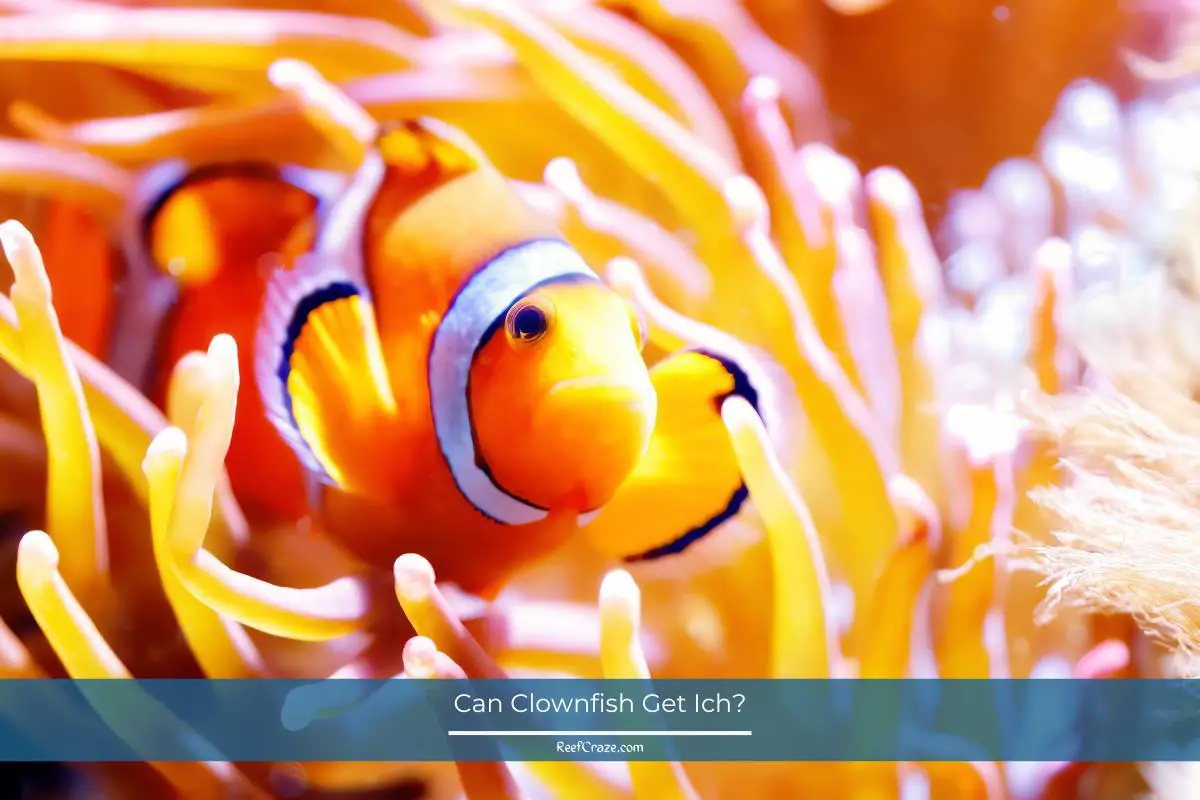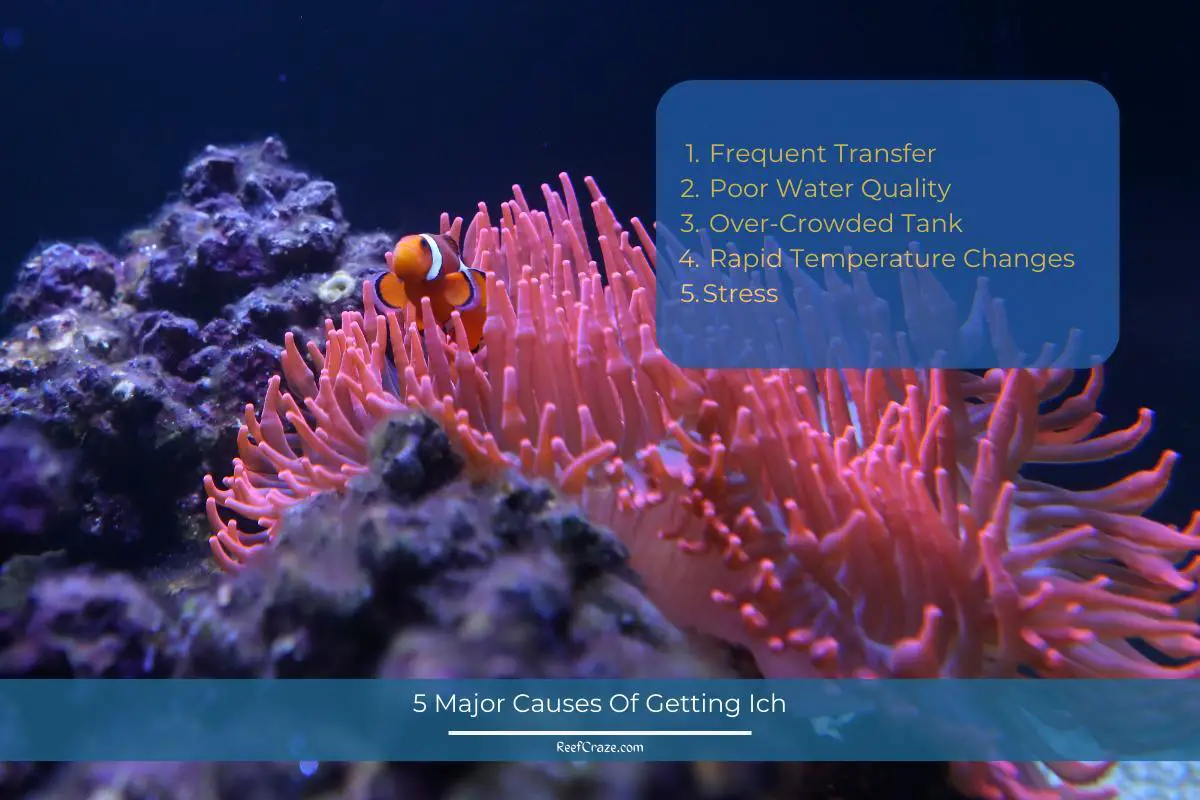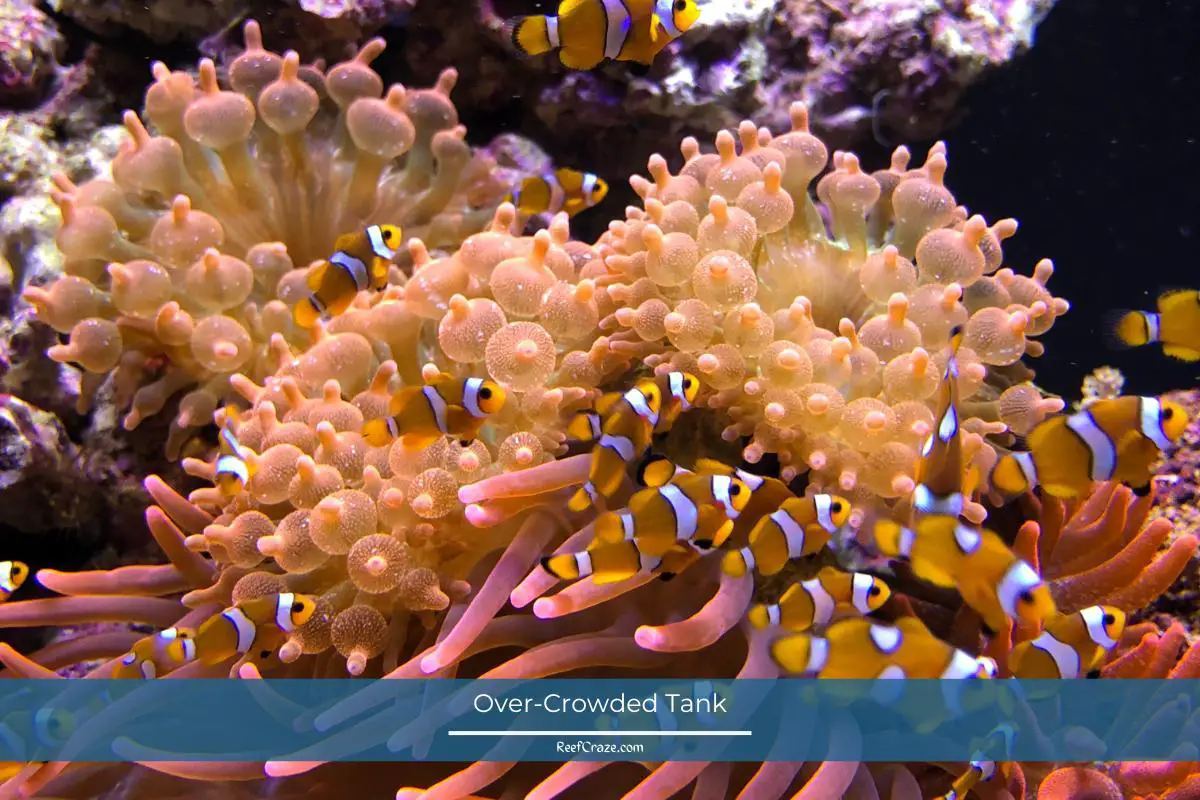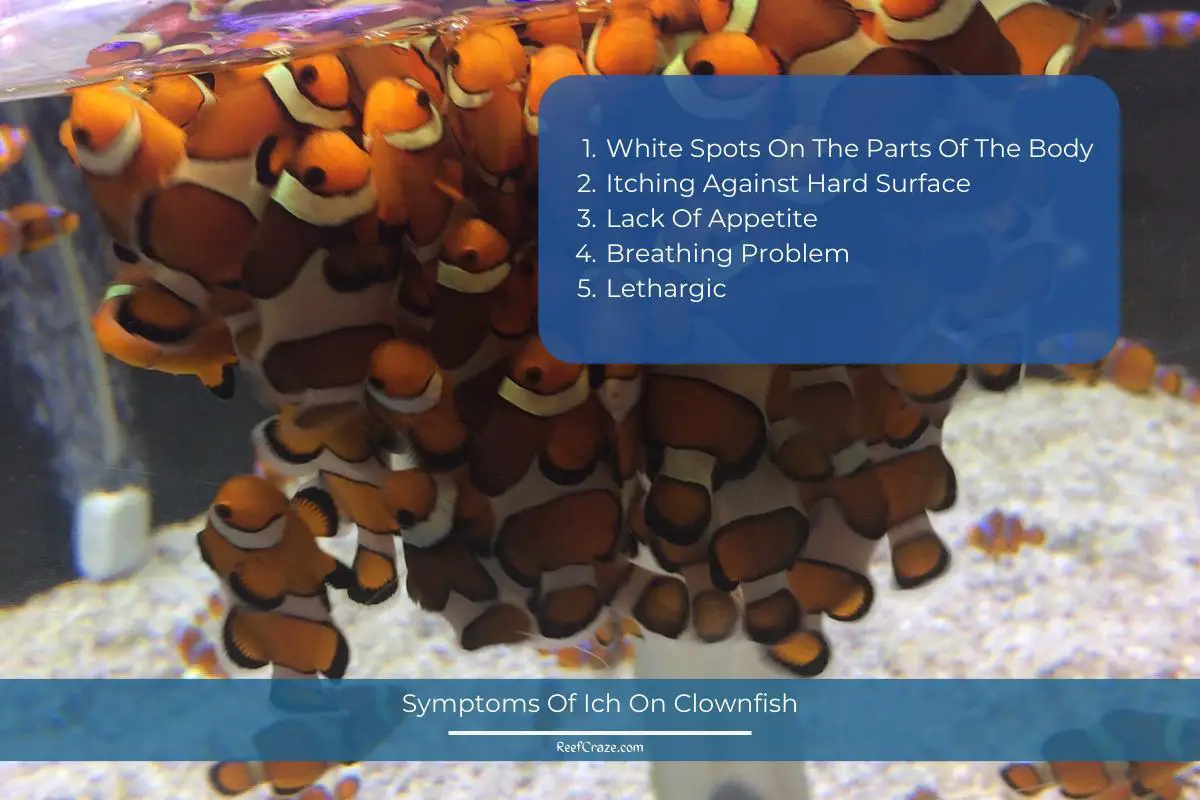As an aquarium-fish enthusiast or a good pet mom or dad, you must notice every little thing concerning your fish. When you notice some white spot on your beautifully vibrant clownfish, I am sure the first name that will come to your mind is Ich.
Contrary to popular belief, clownfish can be infected with ich. As saltwater fish, clownfish have a natural resistance agent on ich, but they are also prone to get infected or can carry the parasite inside them.
Without due care and maintenance, ich can be a severe issue for your clownfish and other inhabitants of the tank. Keep wading through the article as I am about to discuss all there is to know about ich on clownfish.
What Does It Mean By Clownfish Ich?
Ichthyophthirius Multifiliis is a hardcore name for ich or white spot on a fish’s body. It is basically a parasite that can infect aquarium fish, both saltwater and freshwater. Even though the case is very prominent in freshwater fish, saltwater fish like clownfish are not outside the arena of their infection.
An attack from ich parasite is unraveled by the white spot that can be visible from the naked eye without the help of a magnifier. In the areas of gills and scales, you will notice white marks as small as grains of salt, spreading the whole area. It takes around 5-10 days for the ich to reproduce and spread as an infection.

Can Clownfish Get Ich?
Clownfish living in the aquarium can be infected by ich if the tank or other elements carry the parasite. In the wild, the chances of ich infection are nearly zero for clownfish or any other fish. Since the area is monumental and the number of fish is proportional, there is no risk of ich in nature.
On the contrary, due to closeted areas and higher artificial substances, freshwater and saltwater fishes are susceptible to ich infection. The good news is, saltwater fish, such as clownfish, have a built-in resistance system for ich. The mucus on their skin works to repel the parasites like ich.
Why You Should Not Ignore Ich On Clownfish?
Just because clownfish has a resistant system against ich, you can’t say phew yet. Even though they are resistant to ich, they can be affected by such parasites, especially when you leave them untreated. The spots will permanently be enclosed to their gills and scales.
They might face breathing problems and lose their appetite. The severe condition can lead to the premature death of clownfish as well. If the fish live in a community tank or with multiple fish, they put the other fish, especially freshwater fish, at risk. Since parasites can shift from body to body and the fishes live in enclosed areas, it will take no time for ich to spread.
Ich can dilapidate the body of clownfish in two ways. Ich can directly affect or damage the issue of fish’s skin. Though mucus plays a protective role, it is not always sustainable. Even under such protection, ich can irritate by secondary microbial infections. No access to quick and swift treatment can lead to the death of your clownfish.
5 Major Causes Of Getting Ich
Where ich parasite comes into the tank doesn’t have a solid answer. But ich is very fast to make a home on the host’s body since they can’t survive without a host for more than 48 hours. Ich can infect clownfish for many different reasons.

1. Frequent Transfer
As mentioned earlier, ich only infects the clownfish residing in any tank. Whether you purchase captive-bred or naturally caught fish for your tank, clownfish will travel a lot from the vendor’s den to your home. Such shifting from tanks to tanks raises the risk of ich infection. It is the number one reason for ich infection.
2. Poor Water Quality
Water parameters are very optimal for the good health and nutrition of clownfish. Even though through the plain eye, we only see water inside the tank. But the parameters inside the molecules are constantly reacting with each other and producing by-products. Without proper maintenance and filtration, parasites are likely to generate and multiply.
3. Over-Crowded Tank
Aquarium fish travels many locations and tanks before they land on yours. You do not know what type of disease or bacteria they are carrying. When you add such infected fish inside your tank with other mates, the risk of spreading of disease certainly multiplies. But when the tank is overburdened, any disease turns into a pandemic due to a closeted area. That is why fish are safe from ich in the wild as their area of living is wide and vivid.

4. Rapid Temperature Changes
Ich can’t thrive on the body of a host without a certain temperature. Usually, a stable temperature is extremely crucial for the health and stress level of fish. But the important factor is, stable temperature deters the production cycle of many bacteria and fungus, also ich. When the temperature suddenly shifts, ich regenerates, and the stress of fish makes them vulnerable to such parasites.
5. Stress
For the marine community, stress is not just a mental condition but a threat to the overall health of the fish. Stress and anxiety can affect the physical condition of the fish rapidly. When a fish is stressed, they are more likely to be infected by ich if the parasite persists in the tank.
Symptoms Of Ich On Clownfish
Ich infection is one of the easiest diseases to spot since the symptoms are noticeable, even with a bare eye. Treatment for ich should never be delayed, and as soon as you can identify the symptoms, as better. So, let’s learn about the symptoms quickly.
1. White Spots On The Parts Of The Body
The most visible and apparent symptom of ich infection is small white spots on the body, especially gins, fins, and scales. The size of the white spots is like a grain of salt. These white spots, when spread on the gills, causes the fish hard to breathe.
2. Itching Against Hard Surface
When a clownfish is attacked under ich, its body will itch a lot, especially in the affected area. You will notice your clownfish is rubbing its body horizontally to any hard surface like corals, rocks, or the side of the tank. Such corrosive rubbing can peel off their skin and cause irritation.
3. Lack Of Appetite
As ich affects the mouth area of the clownfish, it gets uncomfortable for them to open or close their mouth. That is why they tend to avoid food and show apathy towards food. Ich also creates microbial infection in the clownfish. That causes inflammation and irritation, which also pumps up the apathy for food.
4. Breathing Problem
Any fish infected with ich will face problems with regular breathing. Since the infected area is gill and the surrounding gills, it is hard for the clownfish to keep breathing underwater. If the water quality is not up to mark, the trouble intensifies a lot.
5. Lethargic
A fish infected with ich lives in a miserable condition that we can never feel. Lack of appetite and issue with breathing makes them sick, and their full-of-energy nature flickers away from them. You will notice them lying on the side of your tank with no urge to swim.

Treatment For Ich On Clownfish
Ich infection is highly treatable and remediable. Once you identify the symptoms of your clownfish, do not dilly-dally about the treatment. Luckily, the treatment for ich infection is inexpensive, swift, and effective. So, let us see how you can put your clownfish out of this misery.
1. Isolation Or Quarantine
Quarantining the infected fish saves not only the fish but also the other inhabitants of the tank. Make sure they receive the safe water quality that they are used to living in, and the parameters are symmetrical. If more than one clownfish is infected, you can keep them in the same container, away from the main tank.
2. Salt Solution
Aquarium salt is the best and cheapest solution to treat ich infection. All you need to do is continue a 0.3% salt treatment for 10 days. After 2-3 days, replace 25% of the water and add the lost salt proportionally. Repeat the cycle until the 10 days expire, and keep adding the 0.3% salt. Aquarium salt can be easily fetched on the local markets or on amazon.
3. Temperature Control
When the clownfish is in quarantine, gradually raise the temperature on the main tank until it hits 86°F or 24-27°C on heat. This will nullify any lying ich on the tank and will make the tank safe and parasite free for the clownfish when they move back in.
4. Medication
During quarantine, in addition to salt therapy, give them copper-based medication. It will mitigate the irritation on the skin and remove ich quickly. Also, regular intake of medication will level up its appetite. Provide nutritious food that is easily chewable and digests easily.
Preventive Measures To Repel Ich
Prevention is always better than cure, am I correct? You can repel ich and many other diseases by following the measures below. It will help to keep the fish from any unforeseeable trouble and trauma and also will provide them with a healthy life inside the tank.
1. Keep The Tank Clean
This is literally the basis of all sorts of preventive measures. Rigorous cleaning of the tank will prevent so many unwanted diseases you can’t imagine. You should opt for copper and magnesium-based cleaner for your tank because they will destroy the lurking parasites for you. Do a deep cleaning every 4-6 weeks.
2. Water Changing
Frequent water changing comes with lots of benefits, other than preventing ich or other parasites. A weekly 15% water change will make the habitation more soothing and enjoyable. Also, even if the filtration system is not doing the job, excessive ammonia and nitrate will leave the tank via water change.
3. Keep The New Fish On Quarantine
If you decide to add new fish to your collection, keep the fish separated in another container. This will give the new fish a boost before joining the gang. Also, if you notice any white spots, you can rest assured that other fishes are safe at least.
4. Do Not Buy Fish From Sick Tank
When you purchase a fish, always ensure the tank that the fish is inhabiting has no sick fish. You may think your fish has no sickness or any symptoms of ich. But they still can carry the parasite around and infect the other fishes in your tank. Also, make sure to avoid online purchasing when it comes to new fish.
Final Words
Just because clownfish are saltwater fish with built-in resistant mucus on their skin doesn’t mean they are safe from ich infection. If you notice any white spots around the gills and scales, you should not dilly-dally and initiate to eliminate the ich from the body.

